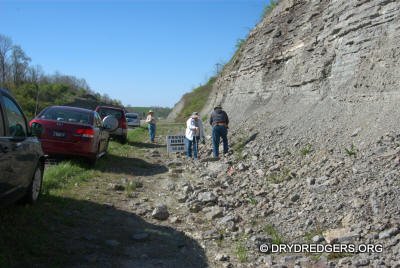
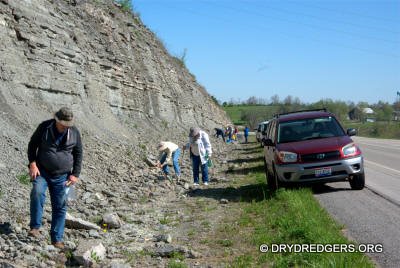

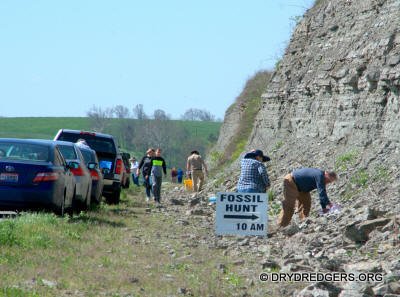
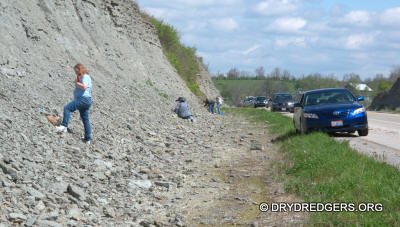
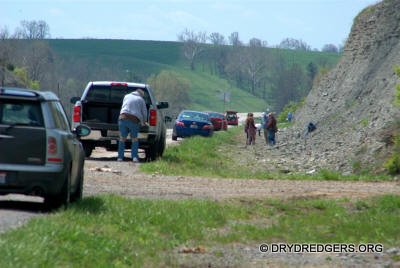
Photos by Bill Heimbrock
This locality was going to be the March 2018 Dry Dredgers field trip, but that trip was canceled due to winter weather. Spring came late, but we had great weather when we returned in April. Matthew Speights led this field trip. It was such a good site and the weather was so good, that we fossil hunted for 4 and a half hours and investigated three different road cuts.
The three sites were within a couple of miles of one another and they were all about a half-hour south of the usual northeastern Kentucky site we normally visit.
All three sites exposed rocks the same age as the Corryville and Mount Auburn Formations of Cincinnati. The age is the late Ordovician Period, making them about 440 million years old. But unlike the Cincinnati area layers, these localities were shallower water, making it warmer and changing the types of animals that lived. We found lots of algae and sponge fossils along with large colonies of bryozoans.
Fossils Found at Site #1
"Solenopora" is the name
assigned to a type of fossil we found in great abundance here. We call it "Brain
Algae" because most specimens resemble brains. It has been thought to be a red
algae but recent research may prove it to be a type of sponge. The specimens
also have a slight pinkish brown color.


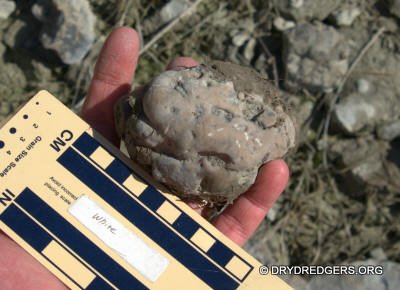
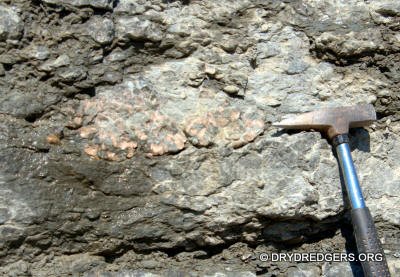
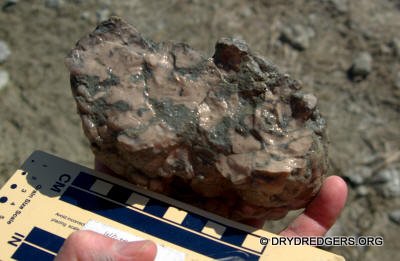
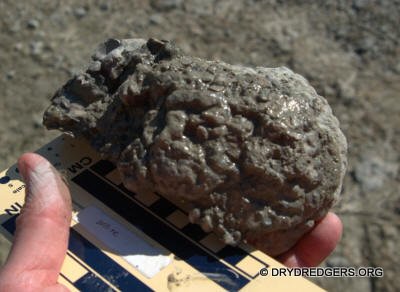
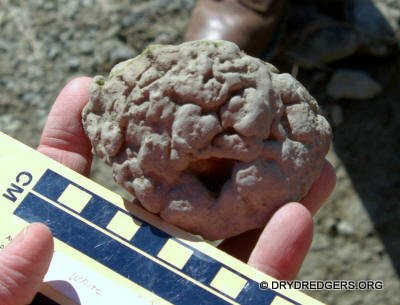
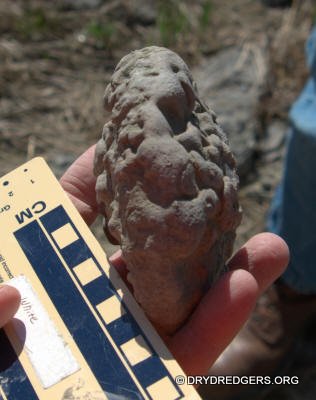
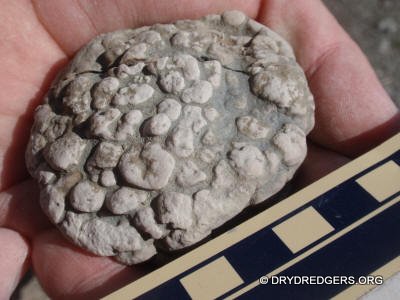
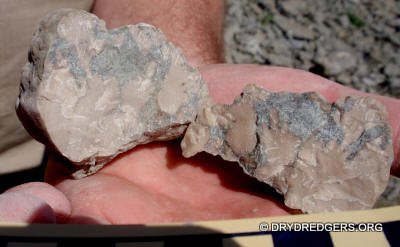

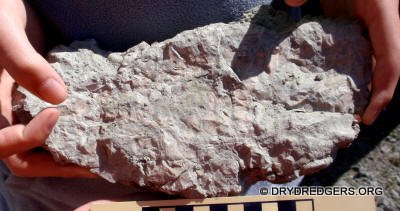


Conularia
One of the best finds of the day, though, was a fragment of
Conularia. (next 2 pictures) 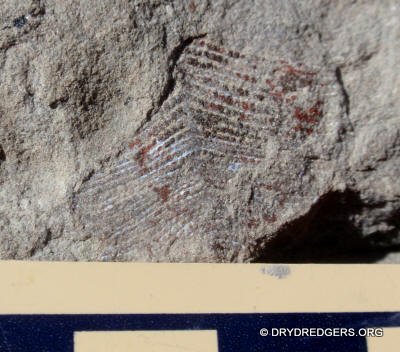
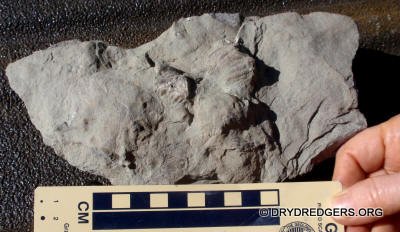
Stromatoporoids (Sponge)
The stomatoporoids on this site were not nearly as common as
the second site. Here's one from site #1 that is large but very crystalized.
(two sides shown)

Brachiopods
By far, the most common brachiopod found on this site was
Vinlandostrophia ponderosa.
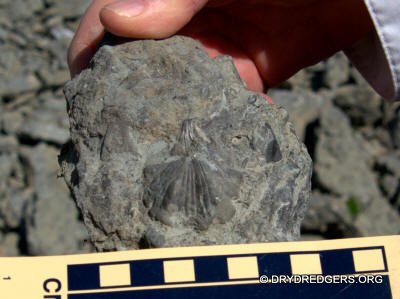
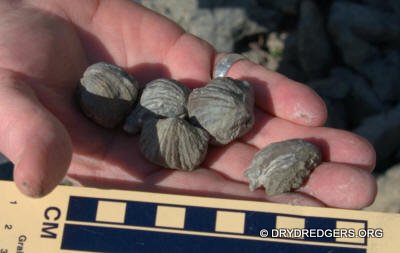

Rafinesquina fracta
The second most common brachiopod was
Rafinesquina sp. The specimen shown
is probably R. fracta.

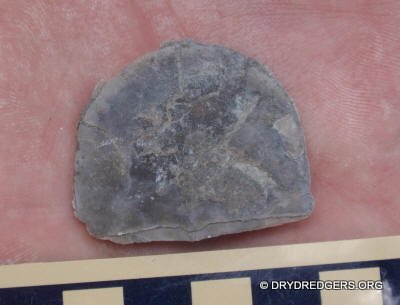
Nautiloid Cephalopods
Site #1 had a few fragments of the internal molds of nautiloid
cephalopods.
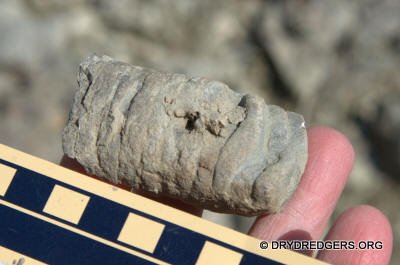
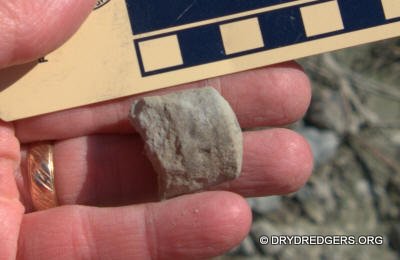
Trilobites
Only fragments of trilobites were found. No whole trilobites that I know about.
Bryozoans
Bryozoans encrusted a large number of unidentified objects on this site. Here's a few.
Gastropods (snails)
Gastropods are ubiquitous. Site #1 is no exception. 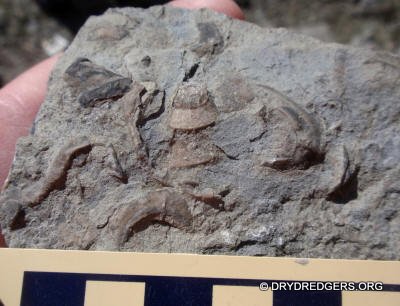
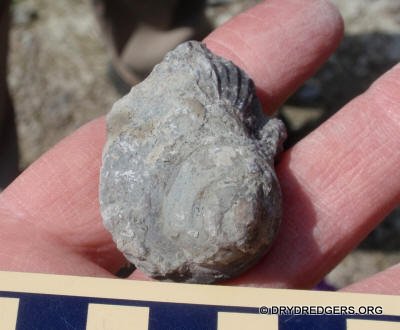
Crinoids
No crinoid
heads were found. But here's a really nice holdfast. In this case, the crinoid's
stem was wrapped around something else to fasten it in place. 
Site #2
Stromatoporoids (sponges)
After an hour and a half, we moved on to our second site. Here
the dominant fauna changed from Solenopora to Stromatoporoids
(sponges). Here's Christa proudly sporting her Stromatoporoid fossil.
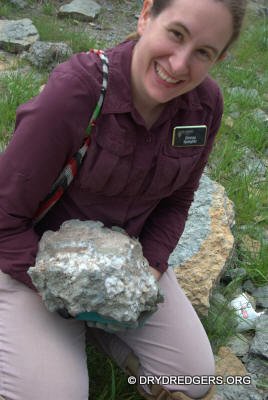
Perhaps the best stromatoporoid find was this magnificent
layered spire, found by Caroline Grathaus.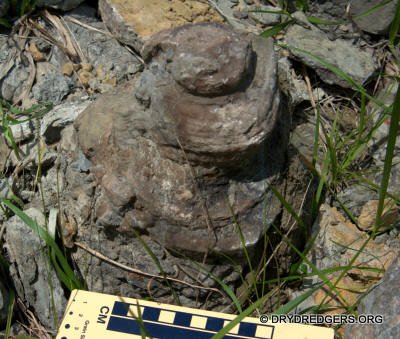
Here are some more stromatoporoids found that day.
This may have been the layer from where these sponge fossils
were weathering out of the road cut. The white line is a drill score.
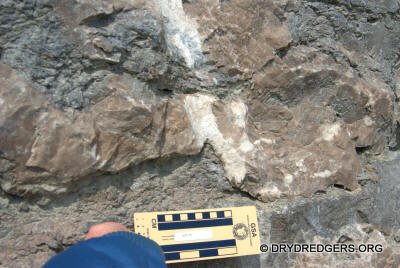
Site #2 "Solenopora"
Bryozoans
The bryozoans on this site were massive. 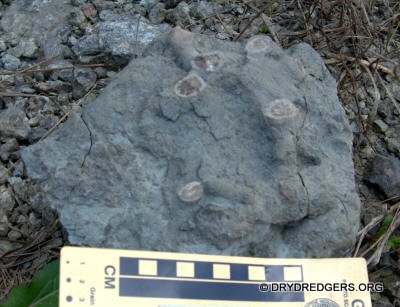

Brachiopods
The brachiopods on site #2 were not as abundant
as on site #1. But the most common brachiopod was still
Vinlandostrophia ponderosa.
Trace Fossils
Here's an interesting trace fossil. Called
Chondrites sp., it's a type of track across the sea bottom
probably made by a wom.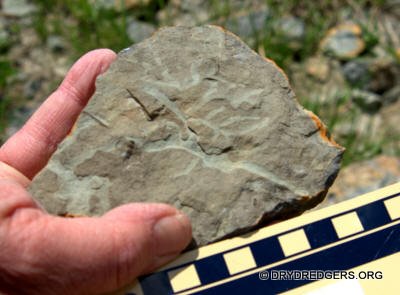
Site #3
The third site of the day had more traditional Cincinnatian-style fossils and they were in great condition. The site exposes the Lower Waynesville Formation.
Pelecypods (clams)
Some of the clams we found were HUGE compared to the varieties we find close to Cincinnati. Additionally, they had excellent external shell features preserved in brown calcite.
These next two clam specimens (5 photos) were also exceptional
because they were partially open, with both valves still hinged. This is a
fantastic find! Nice work!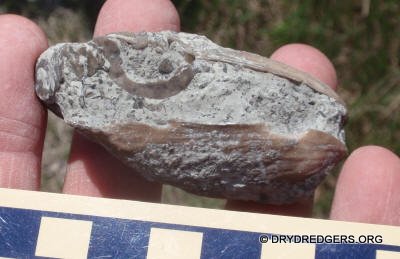
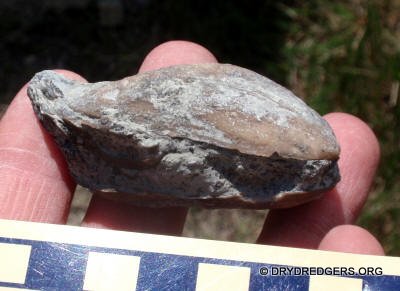
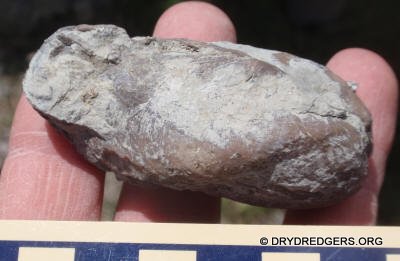
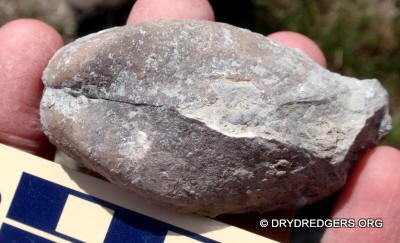
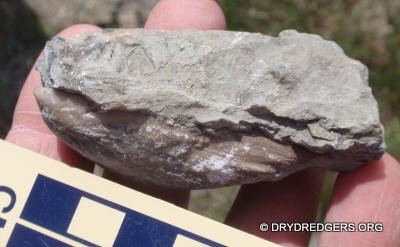
More clams were found on the surface of rocks.
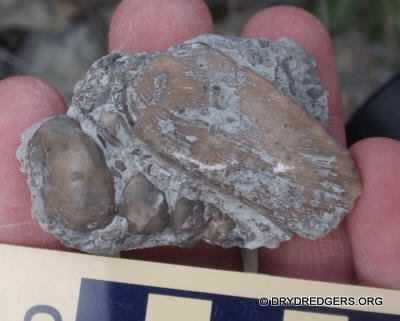
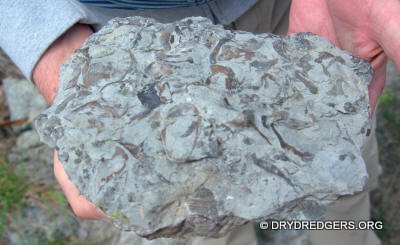
There were also found a few large clams that were very unusual
in their shape. Both valves are flat on one side. It's hard to tell from the
photo below, but here are a couple of them. Yet unidentified.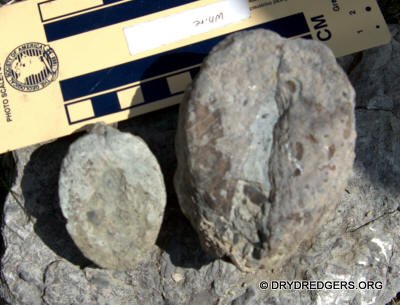
This next clam looks like it is either Ambonychia
sp. or Anomalodonta sp.
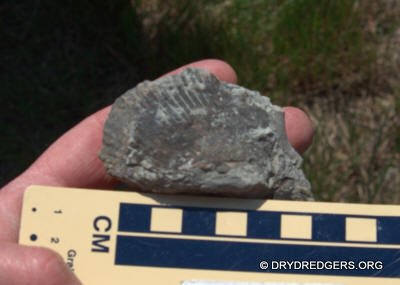
Here's another huge clam, showing both sides (2 photos). Not
in as nice condition but still impressive for the size.


Gastropods
There was a layer of rock that was loaded in spired gastropods
on site #3. Here are a couple of photos of them.

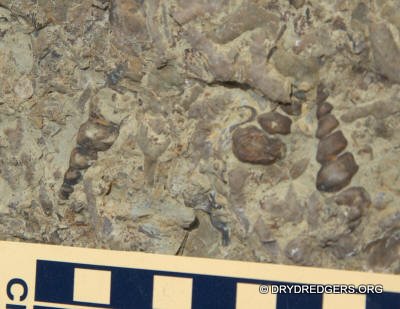
Brachiopods
One nice brachiopod found on site #3 was this
specimen (2 photos) of what appears to be
Holtedahlina sulcata. This species
is already known from the Waynesville Formation but is a nice find just the
same.

Here's a more common brachiopod from site #3 -
Hebertella sp.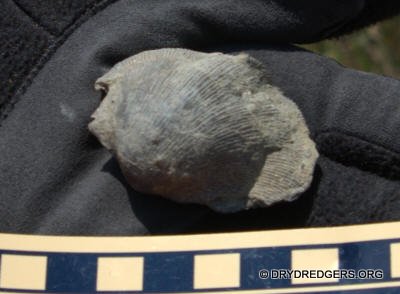
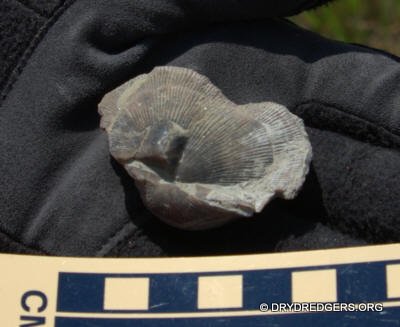
On some of the brachiopods, like this Hebertella,
there were inarticulate brachiopods, like these
Petrocrania scabiosa.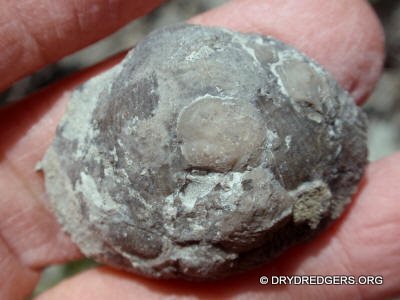
And Vinlandostrophia sp. were
also found in large numbers at this third site as well.

Trilobites
As was true for the other two sites, there were no whole
trilobites found on site #3. But parts of trilobites were easy and good to find.
Here's a pygidium with spine of what is probably
Acidaspis sp.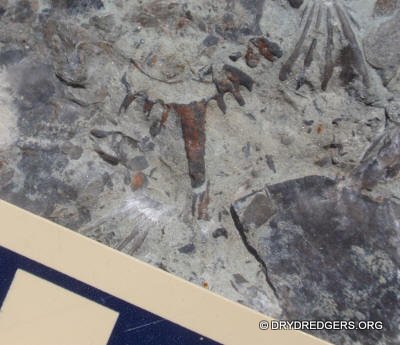
And here's a pygidium of a
Flexicalymene sp.
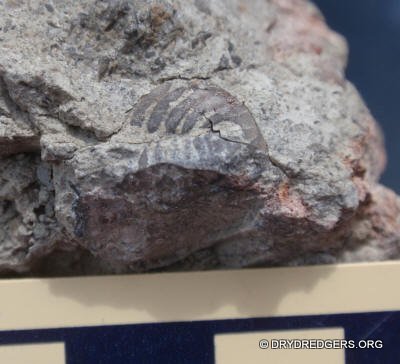
Well that's all for this field trip. I hope you were there because everyone left happy.
Now let's move on to the May 2018 field trip to a McMillan Formation site in northern Kentucky.
Back to the Field Trip Index Page
Return to Dry Dredgers Home Page
The Dry Dredgers and individual contributors reserve the rights
to all information, images, and content presented here. Permission to reproduce
in any fashion, must be requested in writing to
admin@drydredgers.org.
www.drydredgers.org
is designed and maintained by Bill Heimbrock.